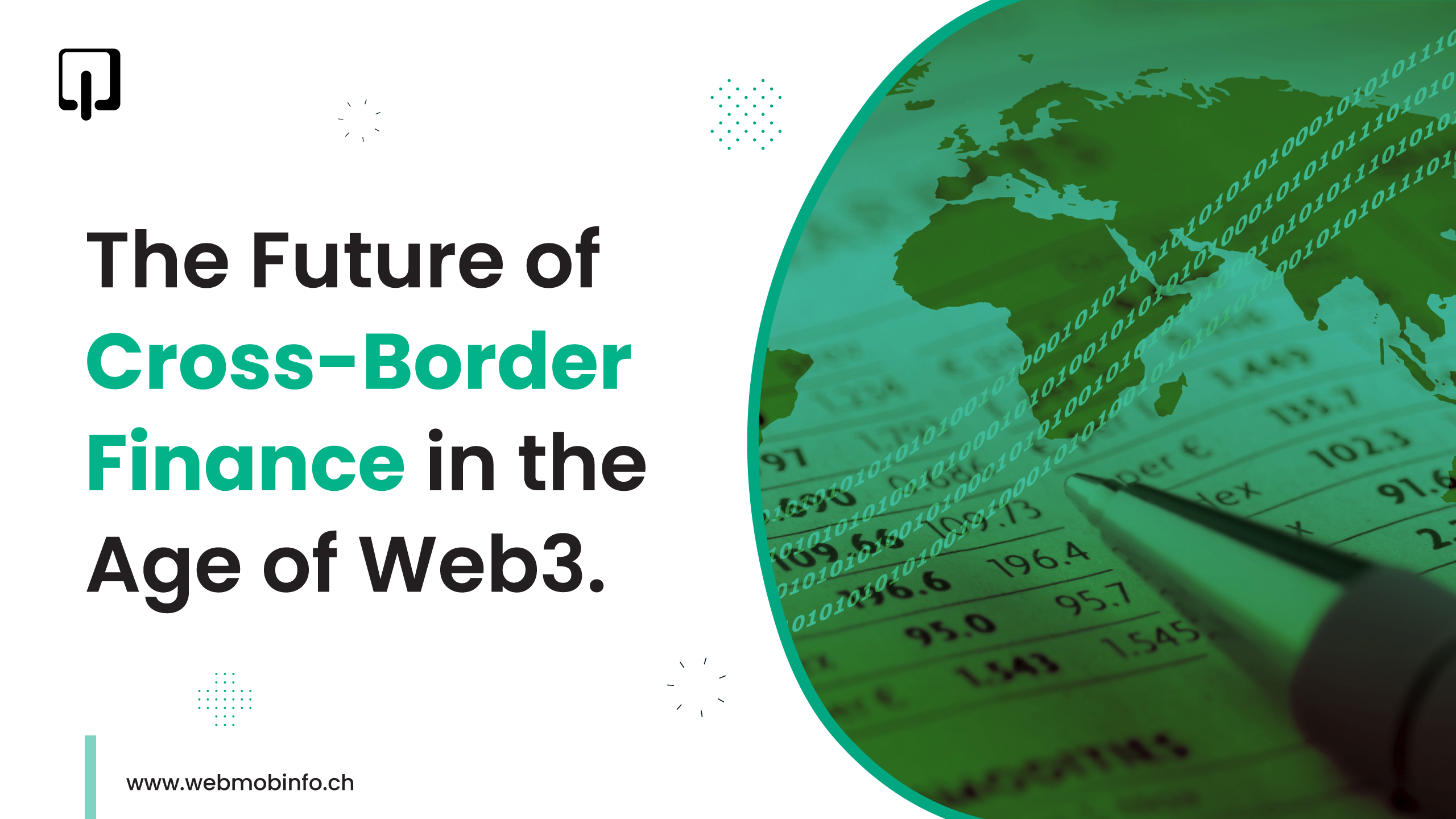With the growth of small and medium-sized enterprises (SMEs), there is a steep rise in cross-border payments. Now, with your traditional bank, performing a cross-border payment isn’t an easy ordeal as you have to incur substantial forex charges and foresee delays in transactions. This led to the forthcoming of global payment aggregators like Paypal, Wise and Western Union and revolutionalise cross-border payment systems. However, merchants and B2B enterprises still have to incur platform charges and other taxes making the whole process a tedious job. Additionally, slow speed, minimal transparency and complex regulations have hindered the efficiency of cross-border payment.
This is where web3 comes into the picture.
It has limitless potential to transform the landscape of cross-border finance creating new business opportunities and solving the pain points of the customers.
So, how does web3 have the power to change the cross-border scenario of the global payment industry?
Let’s have a look at some of the critical factors:
Blockchain and Crypto According to the World Bank, the global average cost of sending remittances was 6.5% in the first quarter of 2021. Moreover, cross-border payments can take several days to settle, involve multiple intermediaries and lack traceability. Blockchain and Crypto provide a better alternative solution for cross-border payments by leveraging the advantages of distributed ledger technology like decentralisation, immutability and consensus.
They enable faster, cheaper and more transparent cross-border payments by:
Eliminating intermediaries and reducing fees
Enhancing speed and efficiency
Improving transparency and traceability
Here are some of the blockchain and crypto platforms enabling efficient cross-border payments:
Ripple: A global payment network that uses its native cryptocurrency, XRP, to facilitate fast and low-cost cross-border payments. Ripple has processed over 1500 transactions per second and reduced the cost of cross-border payments by up to 60%.
Stellar: It is a decentralised and open-source network that uses its native cryptocurrency, XLM, to enable cross-border payments and remittances. Stellar has processed over 3,000 transactions per second thereby reducing the cost by up to 80%.
Libra: A proposed global payment system that uses a basket of stablecoins such as LibraUSD, LibraEUR, and LibraGBP, to enable cross-border payments and financial inclusion. Libra is backed by a consortium of companies and organisations like Facebook, Spotify, Uber etc.
Decentralised Finance (DeFi)
Traditional cross-border financing systems are often restrictive, costly and risky. According to the International Finance Corporation, there is a $5.2 trillion financing gap for SMEs in emerging markets, limiting their growth and development. Additionally, it bears the risk of high-interest rates, collateral requirements, currency fluctuations and political uncertainties.
DeFi resolves the issue by offering more accessible and innovative solutions for cross-border financing by leveraging the power of smart contracts and automating the whole transaction process.
DeFi helps expand access and innovation in cross-border financing by:
Lowering barriers and increasing inclusion
Enhancing flexibility and diversity
Fostering innovation and experimentation
Let’s have a quick look at some of the popular DeFi platforms:
Aave: It is a decentralised lending and borrowing platform allowing users to trade diverse cryptocurrencies like ETH, DAI, USDC etc. Besides this, Aave offers users services like flash loans and rate switching.
Compound: Compound is a decentralised money market protocol that provides similar services to Aave's. Additionally, it offers cTokens representing the user’s balance and interest in the protocol along with supporting governance mode.
Maker: Another decentralised credit platform that allows users to generate DAI, a stablecoin pegged to the US dollar, by locking up collateral like ETH, BAT etc. Moreover, the platform provides users with collateralised debt positions (CDPs) i.e., smart contracts allowing users to create and manage their DAI loans.
The Implications and Challenges of Web3 for Cross-Border Finance
Web3 technologies like blockchain, crypto and DeFi holds the potential to revolutionise cross-border payments all while creating new opportunities for business and consumers. However, there are some implications and challenges of web3 for cross-border finance.
Let’s have a look at some of the possible implications and challenges of web3 for cross-border finance:
Regulation and compliance: Web3 technologies must comply with existing and emerging regulations that apply to cross-border finance such as anti-money laundering, counter-terrorism financing, consumer protection, data privacy, tax implications etc.
Education and adoption: Web3 technologies must overcome the knowledge and awareness gap that might hinder their adoption by businesses and consumers. Additionally, they are required to compete with traditional cross-border finance that already have a strong presence in the market.
Technology and Innovation: Web3 technologies should ensure the security and reliability of their underlying platforms and protocols and their integration with other systems and networks. Furthermore, web3 must cope with the scalability and interoperability issues affecting its performance and functionality.
Conclusion
Blockchain, crypto and DeFi are shaping the future of cross-border finance, creating new opportunities for the global market. Moreover, it allows for quick, efficient and more transparent cross-border payments and eliminates the need for intermediaries. Despite facing severe challenges from regulatory bodies, web3-based cross-border payments have continued to grow and might even surpass traditional cross-border payments.
